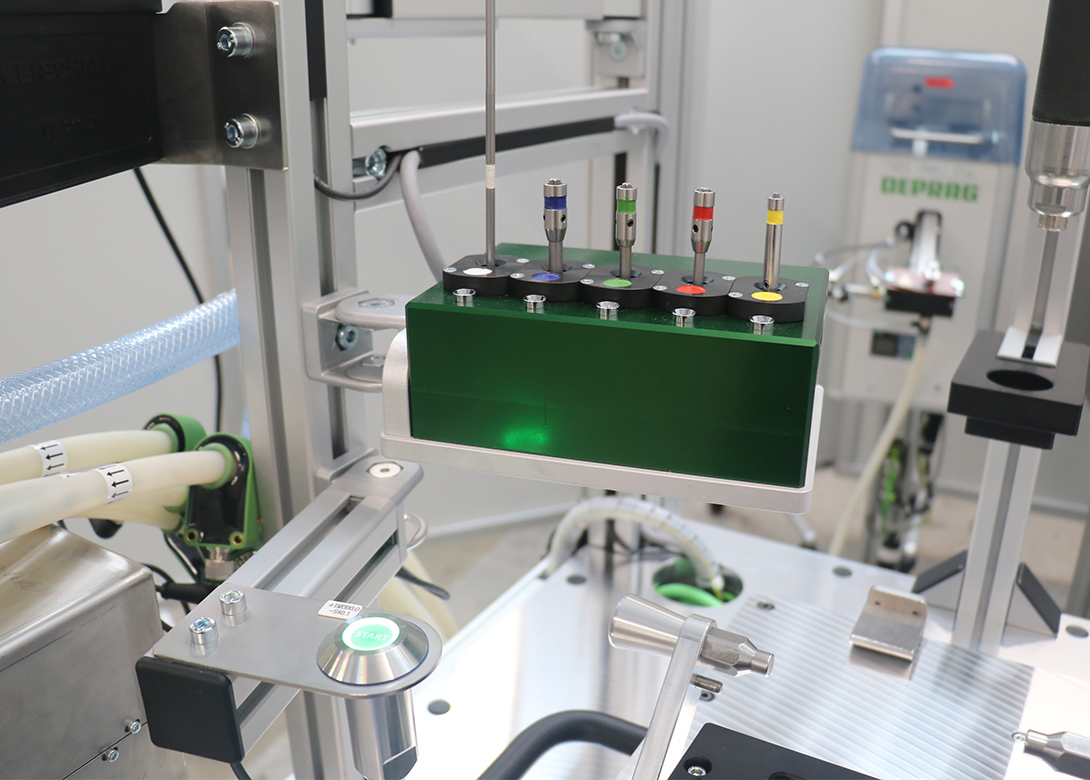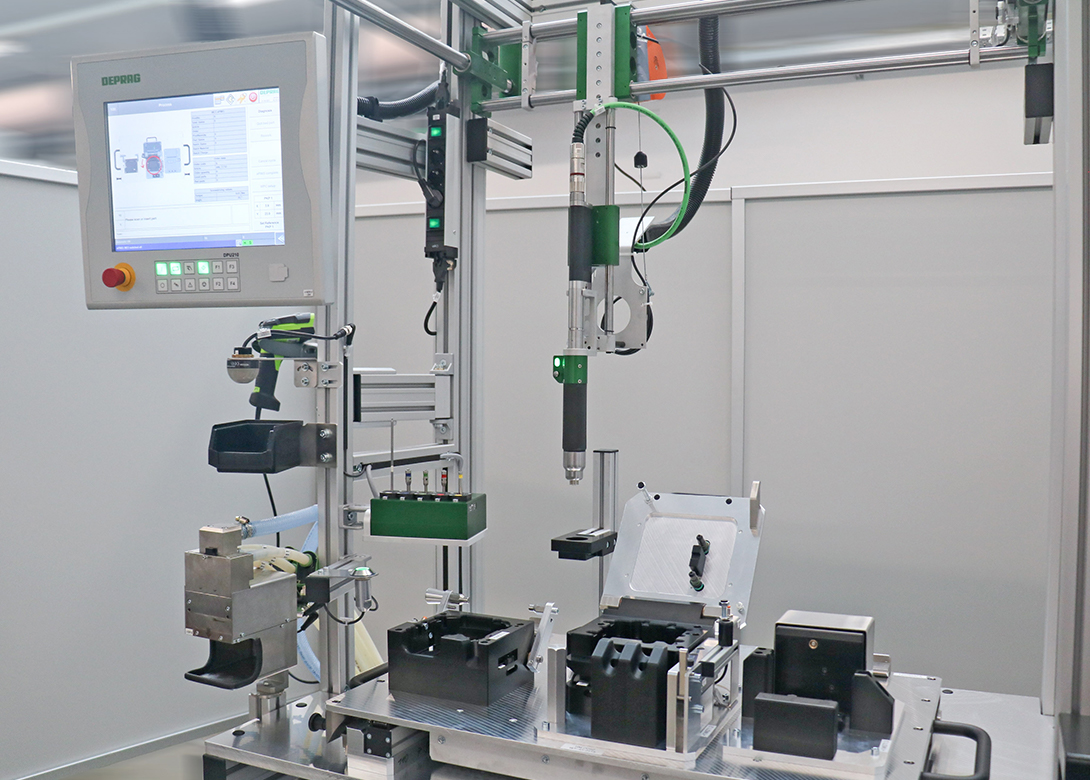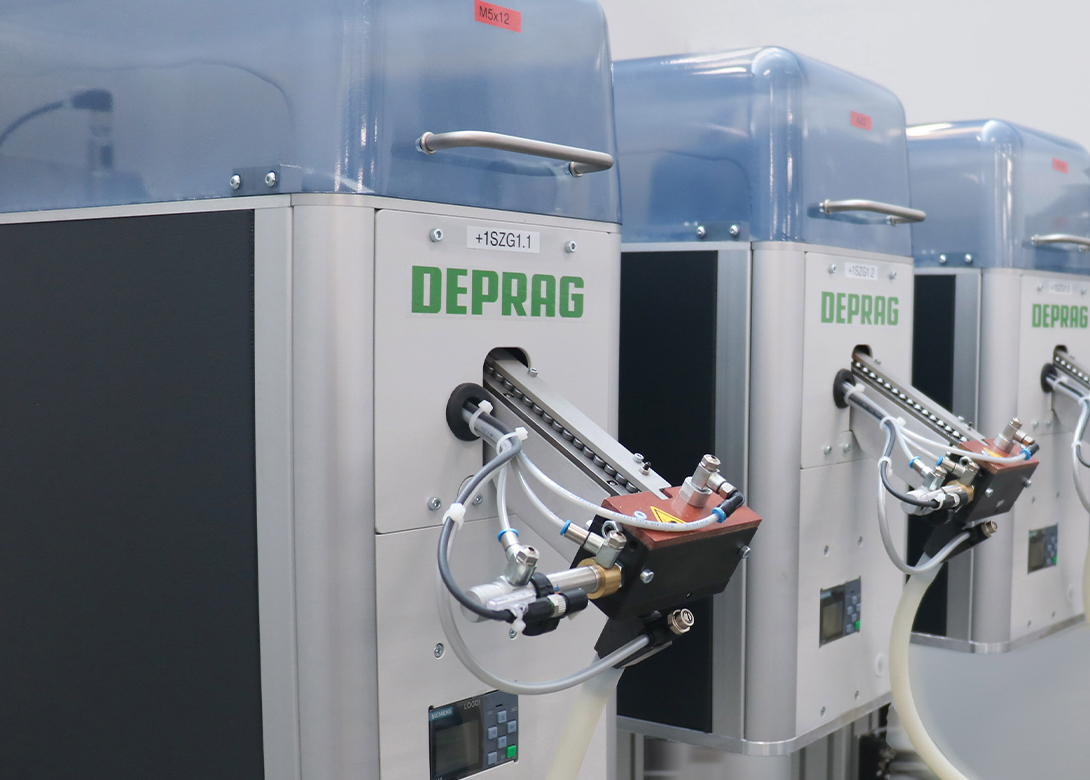
Electric vehicles are a vital element of the energy revolution. They are also presenting great technical challenges for system and machine builders for the production of electric vehicle components. DEPRAG SCHULZ GmbH u. CO has therefore provided flexible workstations for the assembly of electric vehicle charging sockets.
System components required in the assembly process are of crucial importance - they must fulfil requirements for the utmost process reliability in category A assemblies (in accordance with VDI/VDE 2862), flexibility in the diversity of the product range on offer, specifications for traceability, and reliable electrostatic discharge (ESD capability). These are the demands placed on the assembly process by e-mobility.

Furthermore, these components demand an assembly environment which can reliably fulfil technical cleanliness directives and that also scores highly in relation to ergonomics and safety for employees.
This is the challenge faced in the development of the ideal system for the assembly of electric vehicle charging sockets for renowned manufacturers. Nexans autoelectric, a notable automotive supplier for leading automotive manufacturers in turn relies on the expertise of the screwdriving and assembly specialists DEPRAG. The answer to this challenge is found in their flexible manual workstation which can be adapted to the current market situation and completely fulfils the demands of e-mobility.
The screw connections in the assembly of electric vehicle chargers are mainly category A safety relevant screw joints. Process reliability is of utmost importance and all processing steps must be documented and monitored. “By integrating DEPRAG automation components we can guarantee that the right number of the right screws are supplied at the right time,” explains Stefan Rösl, project leader at DEPRAG. “Furthermore, we can ensure that they are supplied to the correct position and assembled using the correct bit.”
Ergonomic guidance of the EC servo screwdriver is handled by a DEPRAG position control portal which supervises the screw position with absolute precision. The in-built sensor technology communicates with the DEPRAG Processing Unit (DPU). Each screw position is approved ensuring the application of appropriate screwdriving parameters.
By means of the DPU, the entire process is monitored, screwdriving results are evaluated and any bit changes required for the screw position are indicated. Features also include, integrated network capability, smooth connection to MES systems and optimal data management. The touchscreen integrated in the DPU enables step-by-step visual display of the assembly process for the user and the convenience of operating status control and display.
Another factor to consider in the assembly of charging sockets is the country-specific variations of electronic components. There are varying standards across Europe, China, Japan and the USA. The answer is provided with adaptors to modify the manual workstation according to country specifications. A “quick-docking-system” has been developed which automatically connects sensors and actuators inbuilt in the adaptor to the permanent control cabinet and communicates with the controller.
DEPRAG feeding technology is another essential element of the manual workstation. It increases the degree of automation and significantly improves ergonomics. The system’s technical cleanliness should equally be commended. Dirt particles can damage products or their related systems. DEPRAG sword feeders are implemented to ensure technical cleanliness in assembly. They guarantee gentle, low friction screw feeding and separating, both in bulk or for individual parts. The CleanFeed concept is supported by the DEPRAG screw presenter with a powerful integrated vacuum pump which removes particles from the screws.
In addition, highly sensitive electronic components are protected with the targeted discharge of electric charges. The ESD capable DEPRAG solutions are dependable, measurable and verifiable which is a great advantage for the end user. “The flexible manual workstation is an ideal and efficient solution. Planning uncertainties can be counteracted and several assembly processes combined in one system,” emphasises Johannes Wagner, process developer at Nexans autoelectric. “We have learnt through our collaboration that all our technical requirements can be realised using DEPRAG’s standard automation components.”


Having spent a decade in the fastener industry experiencing every facet – from steel mills, fastener manufacturers, wholesalers, distributors, as well as machinery builders and plating + coating companies, Claire has developed an in-depth knowledge of all things fasteners.
Alongside visiting numerous companies, exhibitions and conferences around the world, Claire has also interviewed high profile figures – focusing on key topics impacting the sector and making sure readers stay up to date with the latest developments within the industry.
Don't have an account? Sign Up
Signing up to FastFixTechnology.com enables you to manage your account details.